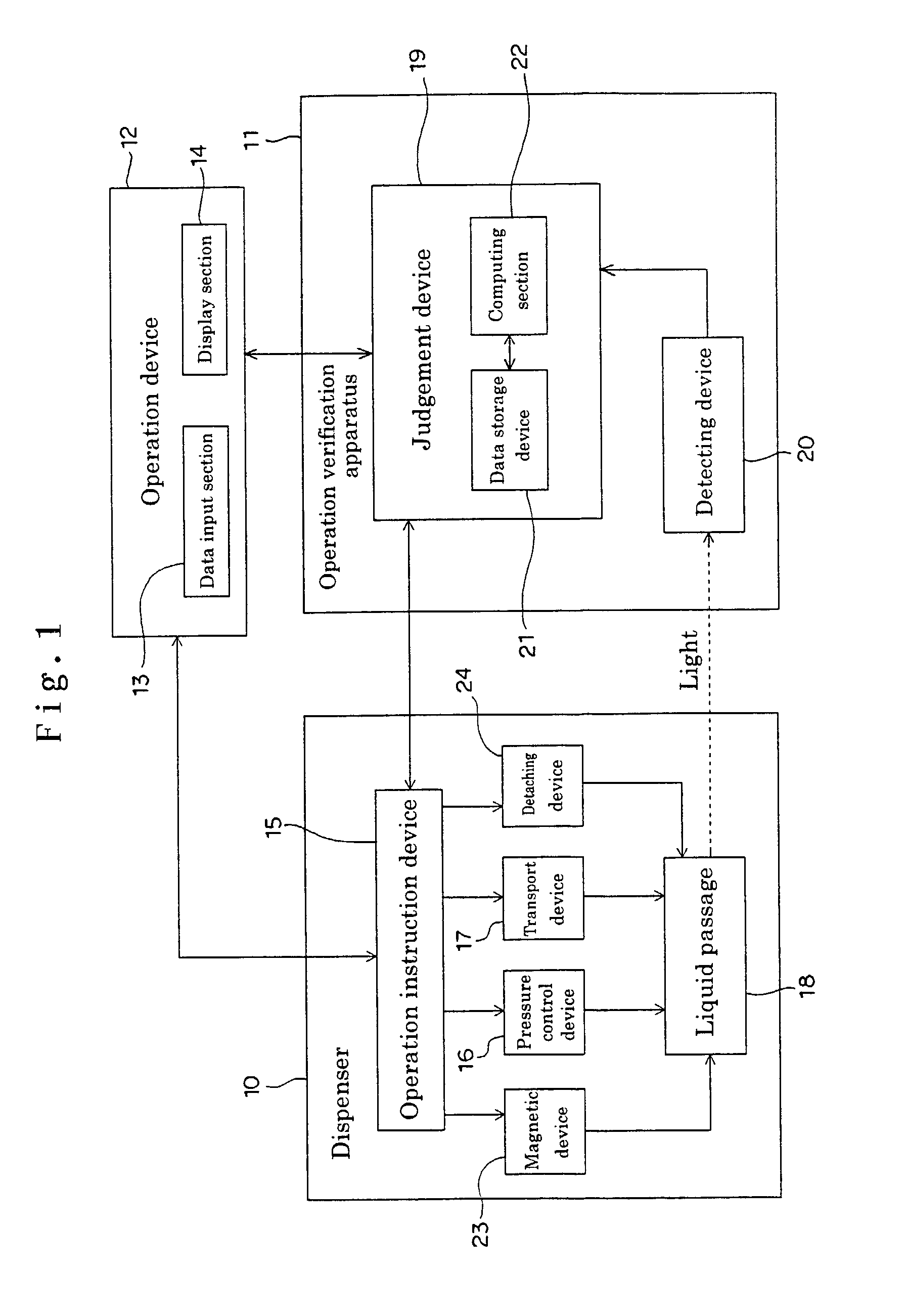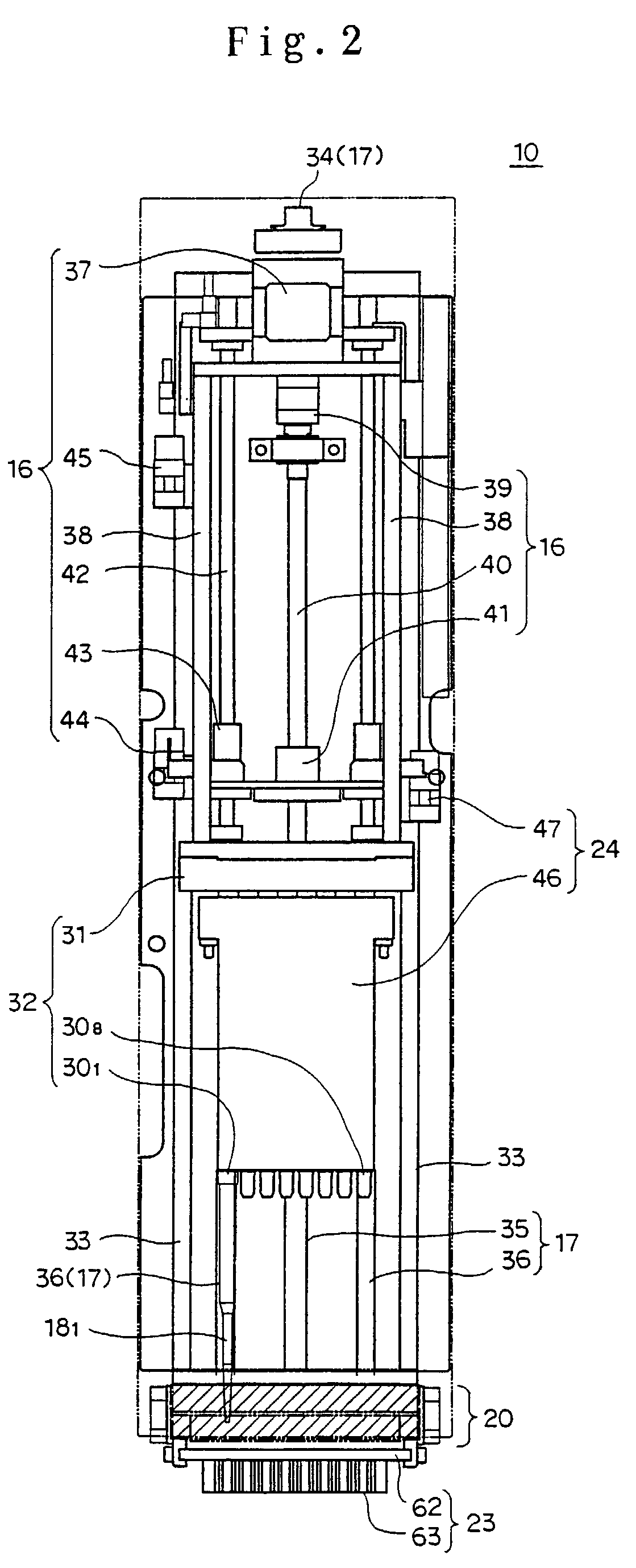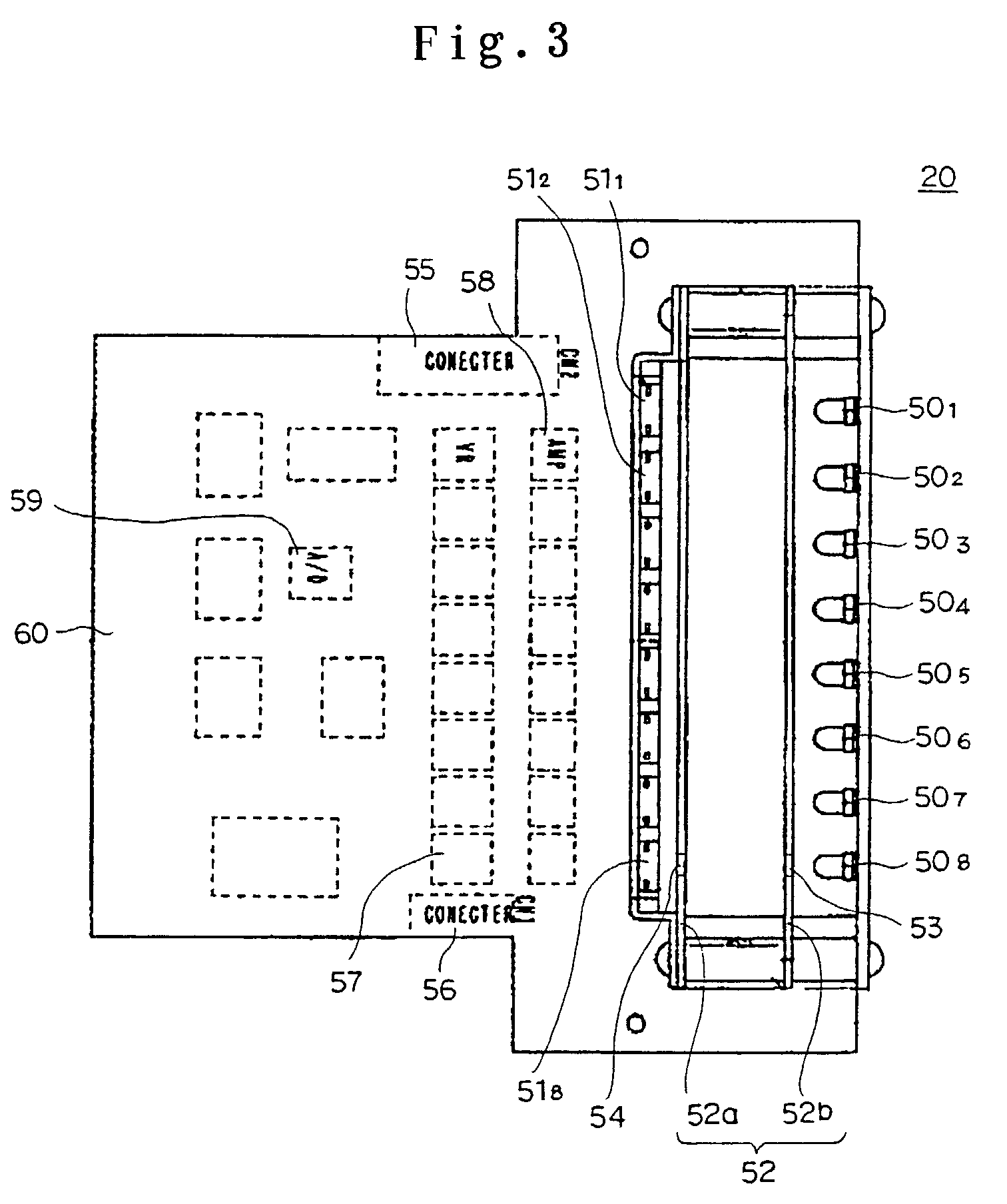Operation checking device and checking method for dispenser
- Summary
- Abstract
- Description
- Claims
- Application Information
AI Technical Summary
Benefits of technology
Problems solved by technology
Method used
Image
Examples
Embodiment Construction
[0114]Next is a description of embodiments of the present invention based on the figures The present invention is not limited to these embodiments unless specified.
[0115]FIG. 1 shows a dispenser system 1 according to the present embodiments.
[0116]This dispenser system 1 comprises; a dispenser 10 which dispenses liquid by drawing up and discharging liquid stored in a container, an operation verification apparatus 11 for verifying the operation of the dispenser 10, and an operation device 12 for effecting input of various operation instructions and data with respect to the dispenser 10 and the operation verification apparatus 11, and also for displaying contents of operating instructions, and the result of the operation verification and the like for an operator.
[0117]Here, the operation device 12 comprises; a data input section 13 including a keyboard, switches, a mouse, a touch panel, a communication device, a CD drive, a floppy disk drive or the like for entering the operation instr...
PUM
 Login to View More
Login to View More Abstract
Description
Claims
Application Information
 Login to View More
Login to View More - R&D
- Intellectual Property
- Life Sciences
- Materials
- Tech Scout
- Unparalleled Data Quality
- Higher Quality Content
- 60% Fewer Hallucinations
Browse by: Latest US Patents, China's latest patents, Technical Efficacy Thesaurus, Application Domain, Technology Topic, Popular Technical Reports.
© 2025 PatSnap. All rights reserved.Legal|Privacy policy|Modern Slavery Act Transparency Statement|Sitemap|About US| Contact US: help@patsnap.com



